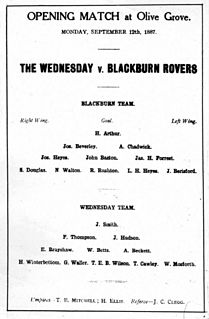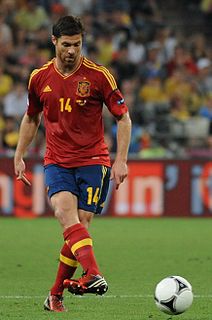 W
WIn association football, a bicycle kick, also known as an overhead kick or scissors kick, is an acrobatic strike where a player kicks an airborne ball rearward in midair. It is achieved by throwing the body backward up into the air and, before descending to the ground, making a shearing movement with the lower limbs to get the ball-striking leg in front of the other. In most languages, the manoeuvre is named after either the cycling motion or the scissor motion that it resembles. Its complexity, and uncommon performance in competitive football matches, makes it one of association football's most celebrated skills.
 W
WCatenaccio or The Chain is a tactical system in football with a strong emphasis on defence. In Italian, catenaccio means "door-bolt", which implies a highly organised and effective backline defence focused on nullifying opponents' attacks and preventing goal-scoring opportunities.
 W
WA corner kick is the method of restarting play in a game of association football when the ball goes out of play over the goal line, without a goal being scored and having last been touched by a member of the defending team. The kick is taken from the corner of the field of play nearest to where it went out. Corners are considered to be a reasonable goal scoring opportunity for the attacking side, though not as much as a penalty kick or a direct free kick near the edge of the penalty area.
 W
WThe Cruyff Turn is an evasive football move or dribbling named after Dutch player Johan Cruyff. In the 24th minute of the game against Sweden in the group stage of the 1974 World Cup, while Cruyff had control of the ball in an attacking position but was facing his own goal and being guarded tightly by Swedish defender Jan Olsson, Cruyff feigned a pass before dragging the ball behind his standing leg, turning 180 degrees, and accelerating away. With its simplicity, effectiveness and unpredictability, the Cruyff Turn remains one of the most commonly used dribbling moves in modern football.
 W
WCurl or bend in association football is spin on the ball which will make it change direction, called a 'screw shot' in the 19th century. When kicking the ball, the inside of the foot is often used to curl the ball, but this can also be done by using the outside of the foot. Similar to curl, the ball can also swerve in the air, without the spin on the ball which makes the ball curl.
 W
WIn association football, diving is an attempt by a player to gain an unfair advantage by falling to the ground and possibly feigning an injury to give the impression that a foul has been committed. Dives are often used to exaggerate the amount of contact present in a challenge. Deciding on whether a player has dived is often very subjective, and one of the most controversial aspects of football discussion. Players do this so they can receive free kicks or penalty kicks, which can provide scoring opportunities, or so the opposing player receives a yellow or red card, giving their own team an advantage. Diving is also known as simulation, Schwalbe, and, in North America, flopping.
 W
WForwards are the players on an association football team who play nearest to the opposing team's goal, and are therefore most responsible for scoring goals.
 W
WThe flip flap is a dribbling move, or feint, in football, used to fool a defensive player into thinking the offensive player, in possession of the ball, is going to move in a direction they do not intend to. Players perform it by using the outside of their dominant foot to push the ball towards their dominant side, then quickly move the dominant foot around the ball and using the inside to push the ball to their non-dominant side. Although the footwork is the most distinctive aspect of the flip-flap, its success as a feint also relies heavily on the attacking player having an explosive acceleration from a stationary position.
 W
WIn association football, the formation describes how the players in a team generally position themselves on the pitch. Association football is a fluid and fast-moving game, and a player's position in a formation does not define their role as rigidly as for, for instance, a rugby player, nor are there episodes in play where players must expressly line up in formation. Nevertheless, a player's position in a formation generally defines whether a player has a mostly defensive or attacking role, and whether they tend to play towards one side of the pitch or centrally.
 W
WA free kick is a method of restarting play in association football. It is awarded after an infringement of the laws by the opposing team.
 W
WA header is a technique that is used in association football to control the ball using the head to pass, shoot or clear. This can be done by standing, jumping or diving position. Header is a common technique and is used by players in almost every match.
 W
WA kick is a skill in association football in which a player strikes the ball with his or her foot. Association football, more commonly referred to as football and also known as soccer, is a sport played world-wide, with up to 265 million people around the world participating on a yearly basis. Kicking is one of the most difficult skills to acquire in football. This skill is also vitally important, as kicking is the way in which passes are made and the primary means by which goals are scored.
 W
WA nutmeg is a skill used mainly in association football, but also in field hockey, ice hockey, and basketball. The aim is to kick, roll, dribble, throw, or push the ball between an opponent's legs (feet).
 W
WPassing the ball is a key part of association football. The purpose of passing is to keep possession of the ball by manoeuvring it on the ground between different players with the objective of advancing it up the playing field.
 W
WThe Pelé runaround move is a football move designed to get around an opponent. The move requires split-second timing and speed in execution – letting a pass from a teammate approach but allowing it run past the opponent, then sprinting around the opposing player to continue the attack. It relies on speed for its execution in situations where there is little time or space. The "Pelé variant" was demonstrated by Brazilian Pelé during the 1970 FIFA World Cup match against Uruguay. In the second half, Brazilian centre-forward Tostão played a through pass to Pelé as a counter-attack started. Sprinting up the middle, Pelé was immediately confronted with the Uruguayan goalkeeper Ladislao Mazurkiewicz who came off his line quickly. Pelé got there first and fooled Mazurkiewicz by not touching the ball, causing it to roll to the goalkeeper's left, while Pelé went to the goalkeeper's right. Circling the goalkeeper to collect, Pelé shot while turning towards the goal, but he turned in excess as he shot, and the ball drifted just wide of the far post.
 W
WIn association football, the Rabona is a method of kicking the football whereby the kicking leg is crossed behind the back of the standing leg.
 W
WIn association football, shooting is hitting the ball in an attempt to score a goal. It is usually done using the feet or head. A shot on target or shot on goal is a shot that enters the goal or would have entered the goal if it had not been blocked by the goalkeeper or another defensive player.
 W
WA sliding tackle or slide tackle is a tackle in association football. It is completed with one leg extended to push the ball away from the opposing player. Sliding tackles can often be sources of controversy, particularly when players being tackled fall down over the tackler's foot, and penalties, free kicks and cards are assessed.
 W
WTiki-taka or Tiqui-taca is a Spanish style of play in football characterised by short passing and movement, working the ball through various channels, and maintaining possession. The style is primarily associated with La Liga club Barcelona, especially during the era of manager Pep Guardiola; however, Guardiola distanced himself and the club from the style: "I loathe all that passing for the sake of it", stating, "Barça didn't do tiki-taka!", adding, "You have to pass the ball with a clear intention, with the aim of making it into the opposition's goal". Its development and influence goes back to Johan Cruyff's tenure as manager in the early 1990s all the way to the present. Tiki-taka methods were eventually embraced by the Spain national team by the managers Luis Aragonés and Vicente del Bosque. Tiki-taka moves away from the traditional thinking of formations in football to a concept derived from zonal play.
 W
WA volley is an air-borne strike in association football, where a player's foot meets and directs the ball in an angled direction before it has time to reach the ground. A volley can be extremely hard to aim and requires good foot-eye coordination and timing.